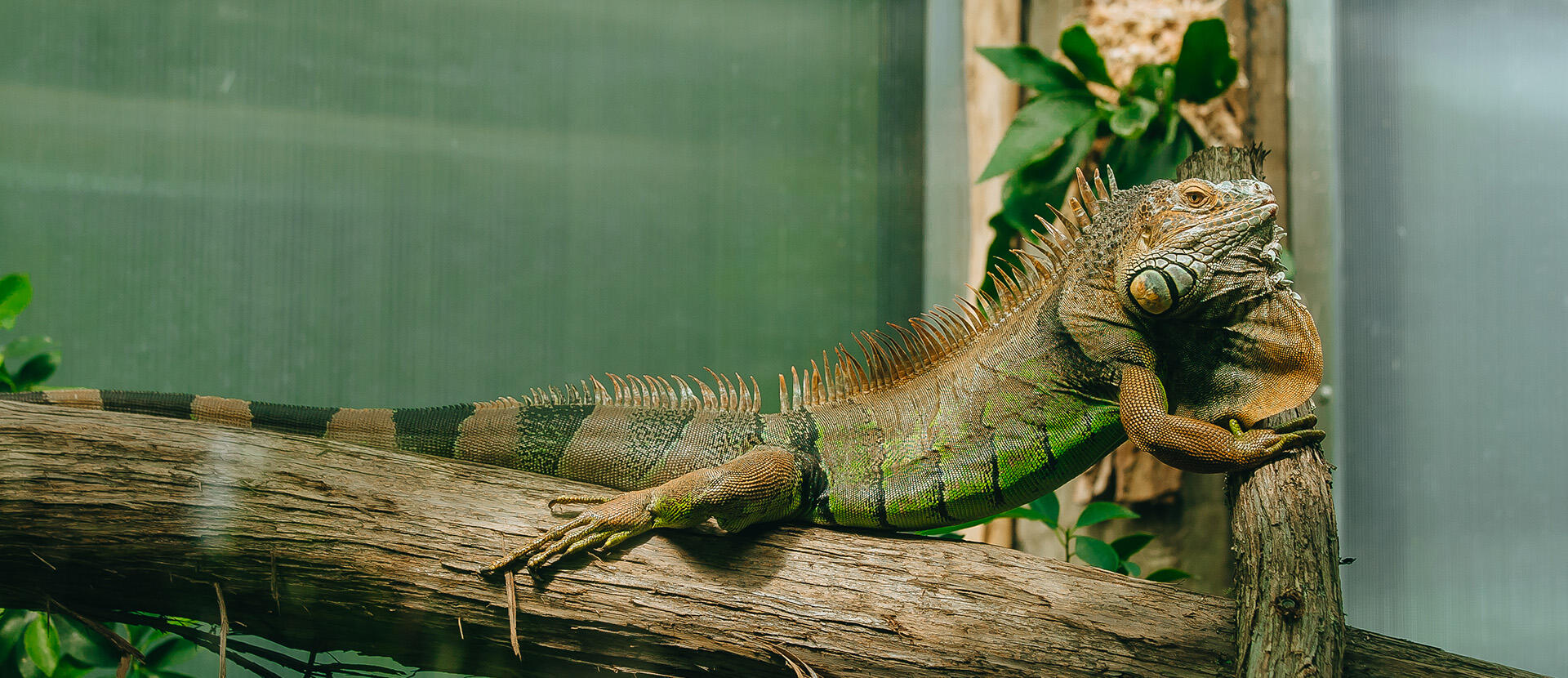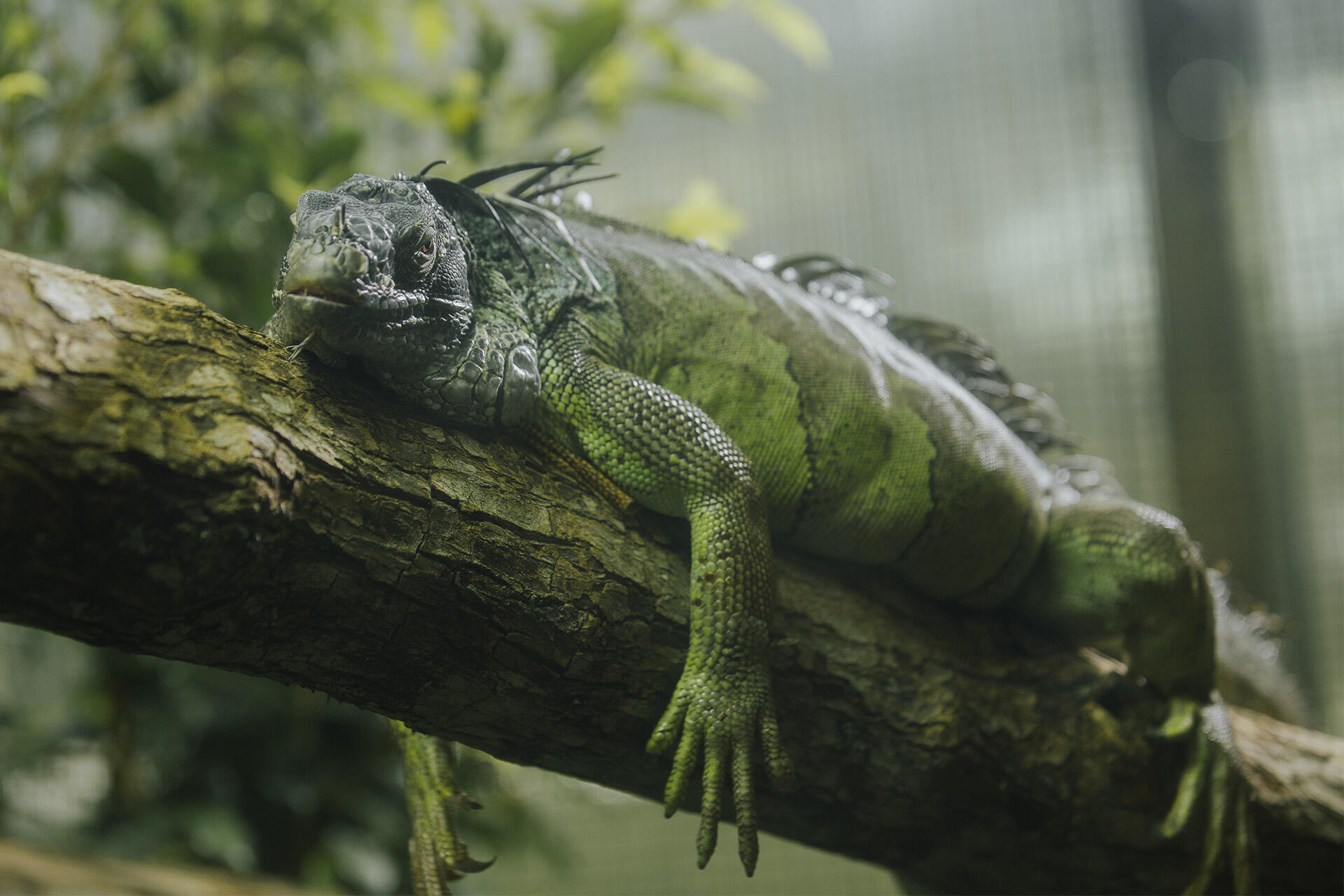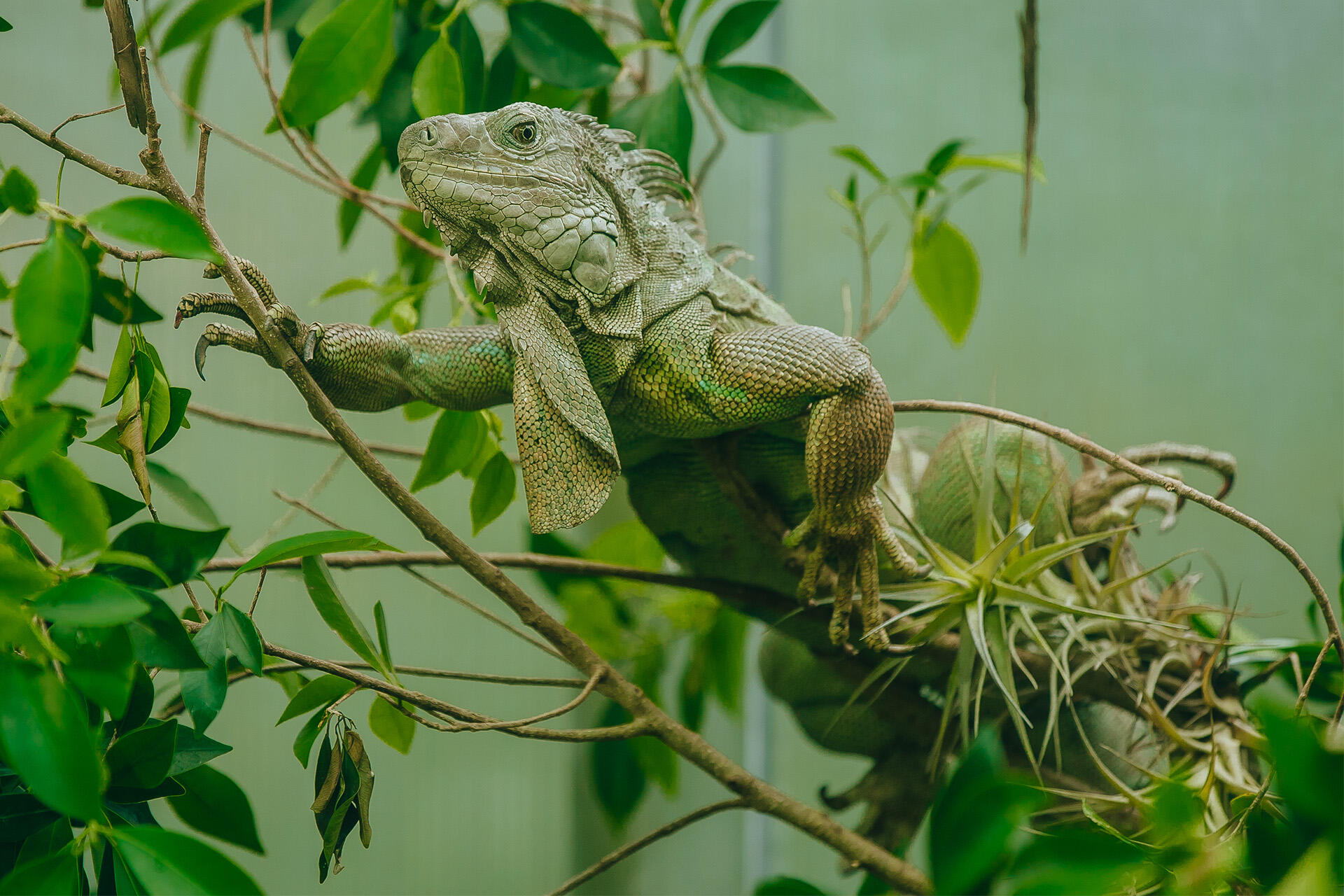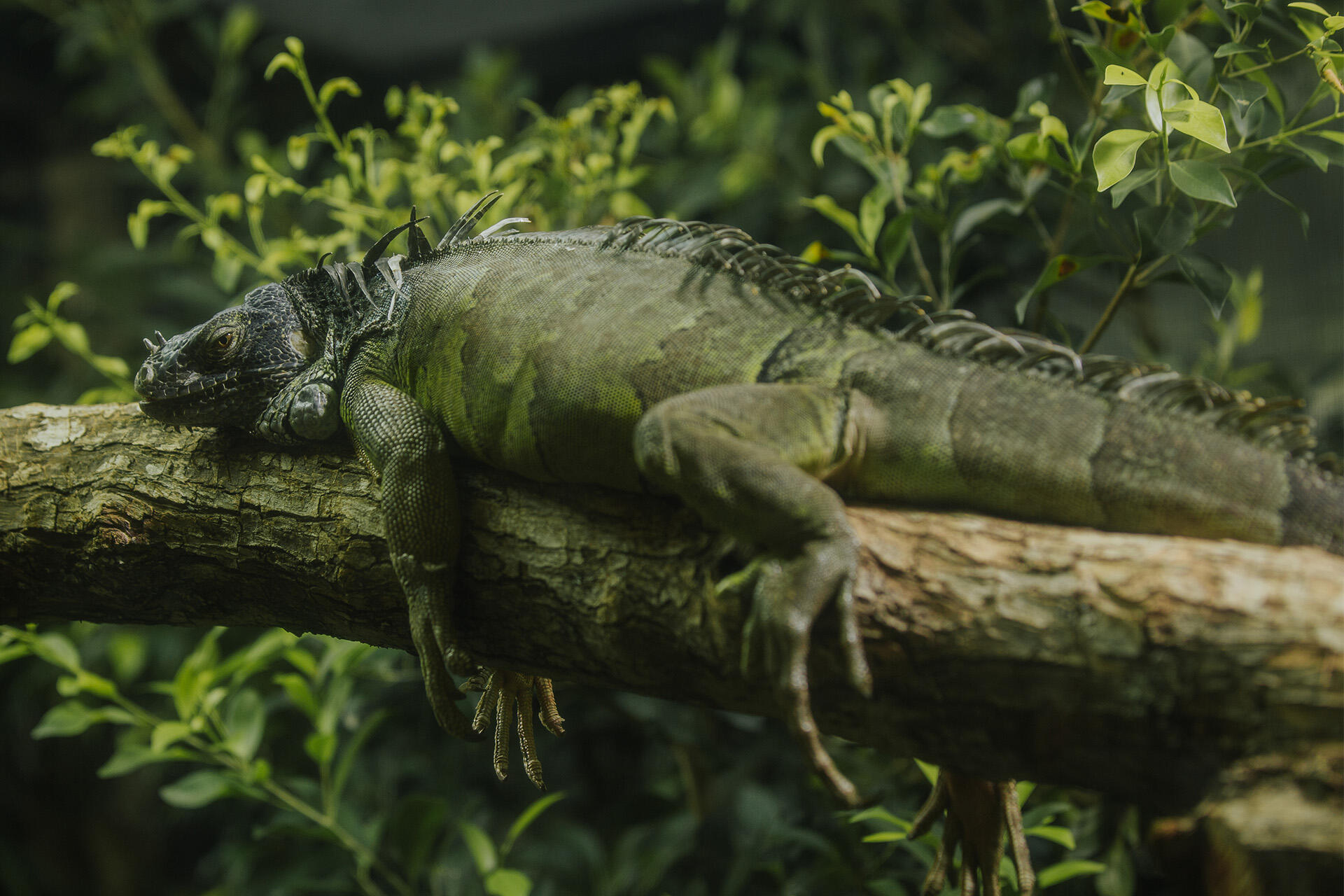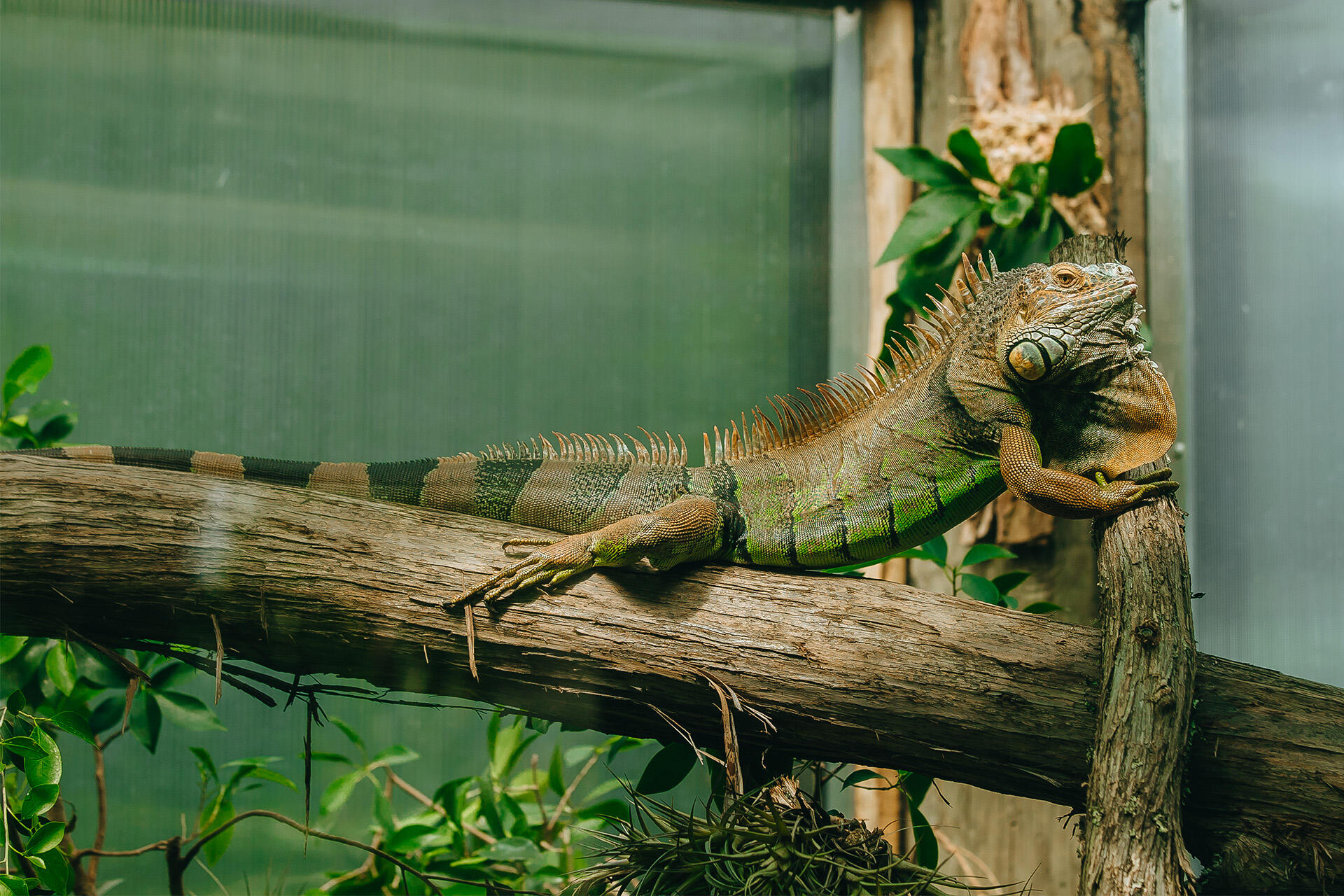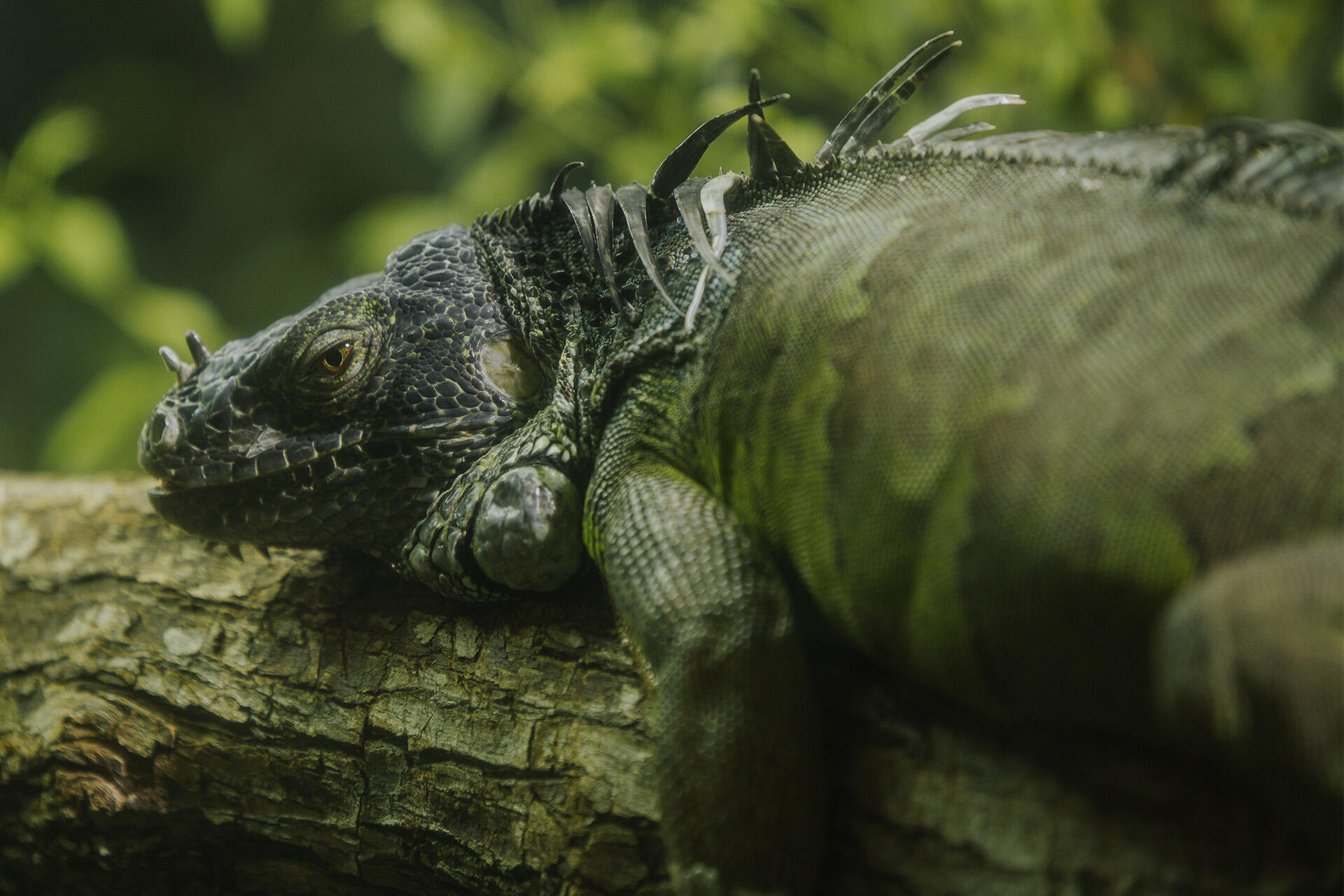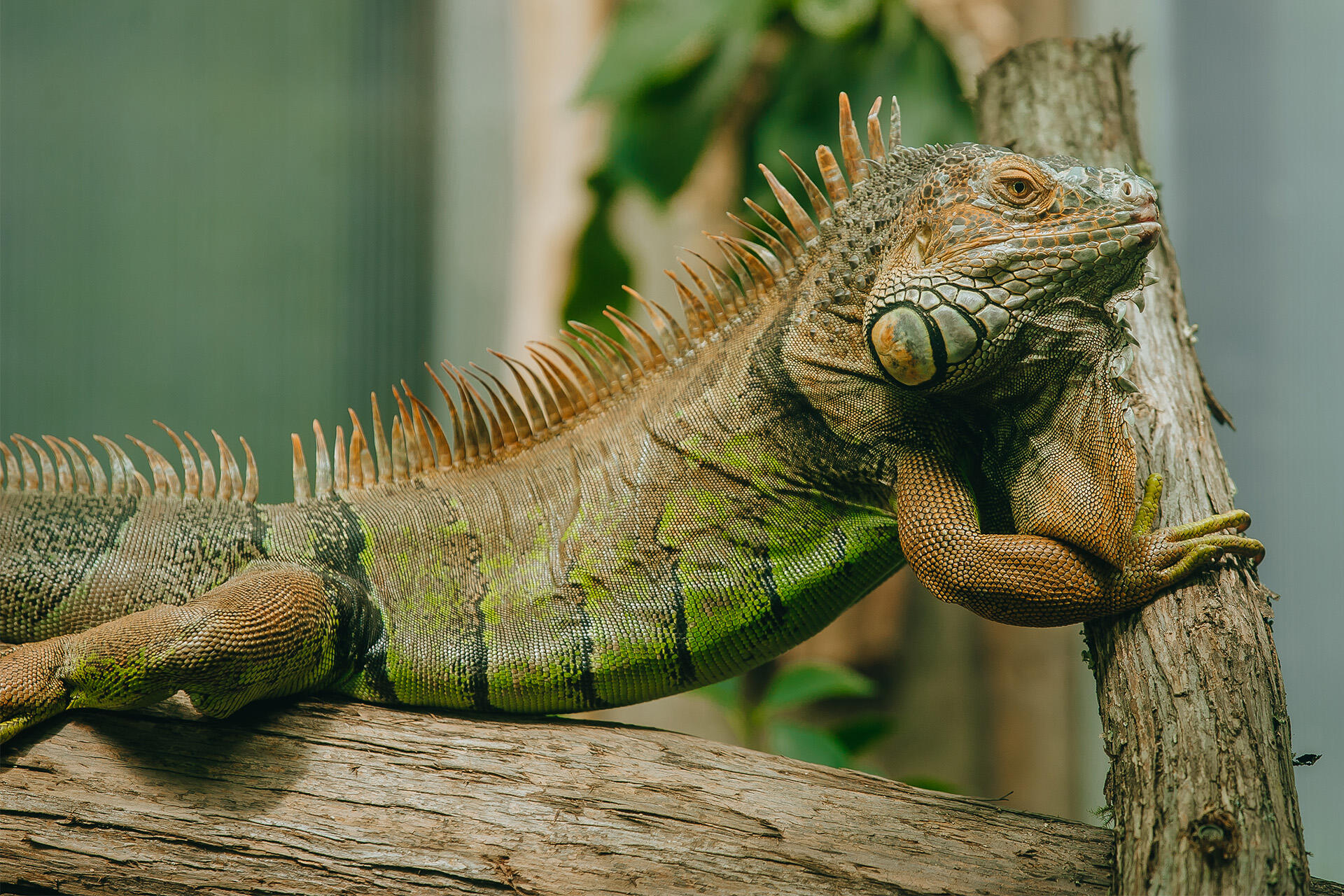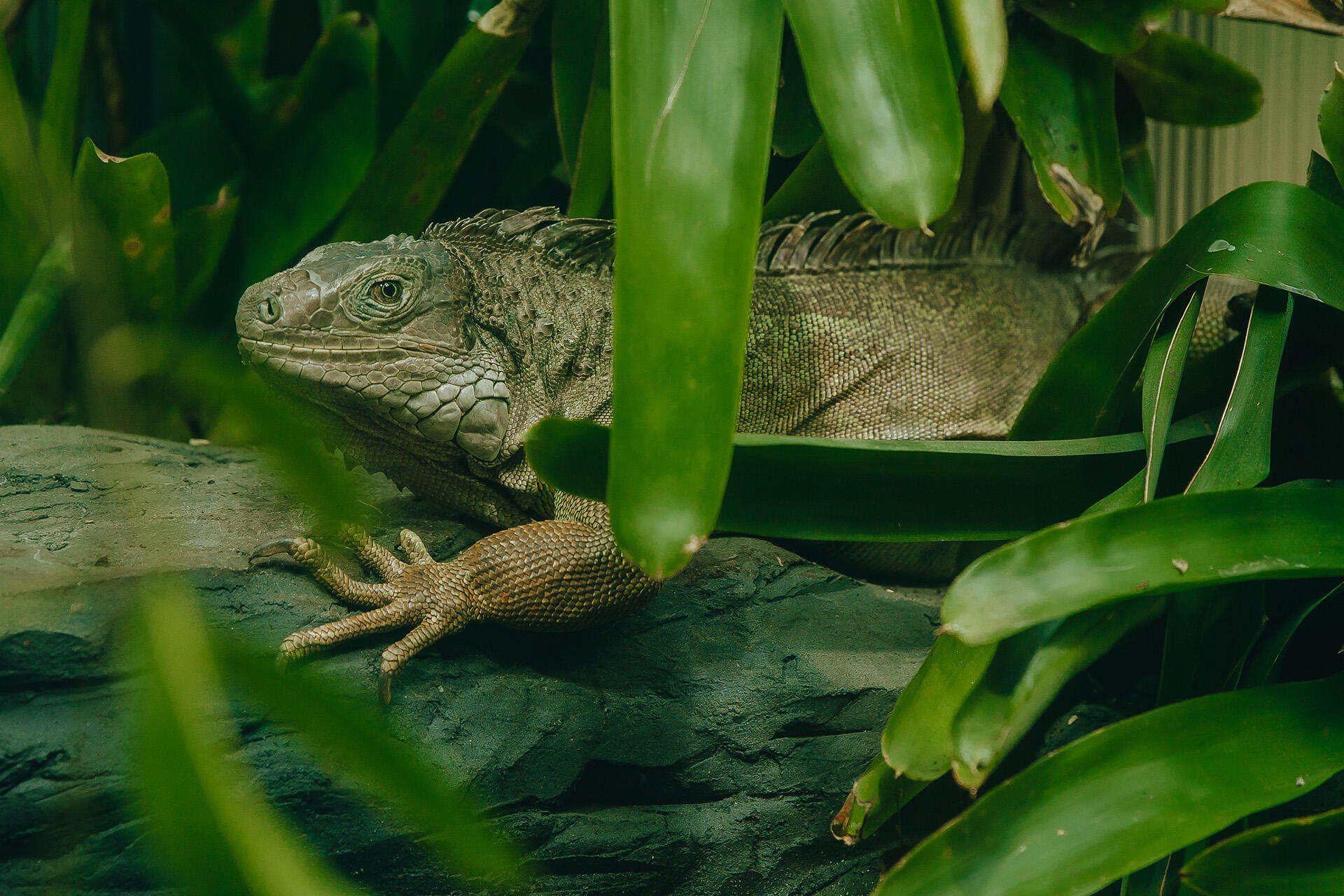Leaping lizards!
These reptiles have strong legs and sharp claws that help them to climb in foliage and hang on to trees. Their long second and third toes add extra stability and grip for climbing. In the wild, iguanas have been known to fall 15 metres without injury, in part thanks to their ability to use their strong claws to grasp at branches and ease their descent.
As well as being great climbers, iguanas are strong swimmers too. If threatened, they can leap from tree branches into the water to avoid harm.
Invasive iguanas
Iguanas are a great example of a species that is able to coexist harmoniously with other species in their native environment but can be very destructive when introduced as a foreign species.
The green iguana’s homeland is Central and South America, but they have been introduced to a number of countries including the Fijian Islands and Puerto Rico, sometimes due to the illegal pet trade. Once introduced, their numbers increase rapidly which can cause destruction to ecosystems, through negatively impacting crops and infrastructure, or introducing disease to native species (including other iguana species).


